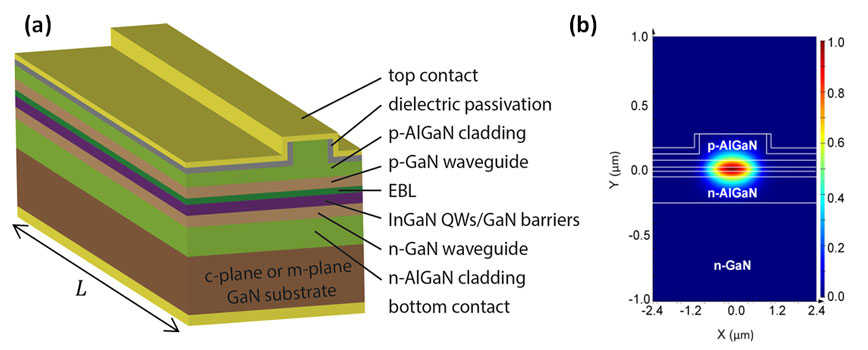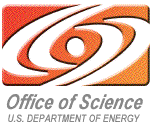Recent News
CHTM Joins NSF's NQVL Pilot Projects
August 9, 2024
OSE PHD, Dr. Xuefeng Li - Wins The Outstanding Interdisciplinary Graduate Programs Award
May 10, 2024
Dr. Ali Rastegari - 2024 OSE Best Dissertation Award Winner
May 10, 2024
2024 OSE Spring and Summer Graduates
May 10, 2024
News Archives
Feezell earns grant from US Department of Energy to develop novel lighting technology
September 19, 2016 - CHTM

Daniel Feezell
Daniel Feezell, CHTM Nanofabrication Advisor and Assistant Professor with Electrical and Computer Engineering at The University of New Mexico (UNM), is the Principal Investigator (PI) for a project which recently brought a grant award to UNM from the United States Department of Energy (US DOE or DOE) Office of Science.
This is an "Experimental Program to Stimulate Competitive Research" (EPSCoR) grant. The Office of Science (SC) is the single largest supporter of basic research in the physical sciences in the United States.
Feezell's project explores the use of Superluminescent Diodes to enhance the functionalities of LED Smart Lighting systems. Conducted in collaboration with Sandia National Laboratories (SNL), the project began in August of 2016 and is projected to continue through August of 2018. The award is $200,000 per year for two years, or $400,000 total.
Investigation of Superluminescent Diodes for Smart Lighting Systems
From the Abstract:
The solid-state lighting ecosystem has evolved very rapidly over the last few years, with significant improvements in the technical performance of light-emitting diodes (LEDs) and the commoditization of LED-based lighting fixtures. There is growing market interest in “Lighting as a Service” applications that will leverage advanced systems to impart new functionalities to lighting and improve energy efficiency, human health, and productivity.
These “Smart Lighting” systems will include high-performance light sources, specialized sensors, and dynamic controls to deliver high quality, energy efficient, color tunable lighting with customized spatial light delivery and integrated visible light communication capability. To achieve these capabilities, smart lighting systems will place greater demands on the performance of light sources. Highly efficient sources with additional functionalities compared to conventional LEDs, such as small form factor, high speed operation, and spatially coherent output beams, will be required.
To address these issues, this project will investigate an alternative device architecture for smart lighting systems known as a superluminescent diode (SLD). SLDs are similar in form to ridge laser diodes and share many of the same characteristics, such as stimulated emission operation, spatially coherent output, small form factor, and the potential for high-speed operation. However, the operating principle for SLDs is distinct from laser diodes in that SLDs lack a strong cavity feedback mechanism, resulting in spatially coherent but temporally incoherent light output. Thus, SLDs may address the issues with laser diodes for lighting, while simultaneously maintaining some of the desirable characteristics of both laser diodes and LEDs.
The objectives of this proposal are to design, grow, and fabricate blue (450 nm) SLDs on two different crystal orientations (polar c-plane and nonpolar m-plane) of free-standing GaN substrates, and to evaluate their potential as sources in smart lighting systems through basic device characterization and detailed investigations of their efficiency droop and modulation bandwidth.

Device and Mode
UNM will collaborate with Sandia National Laboratories (SNL) and the Center for Integrated Nanotechnologies (CINT) to design, fabricate, grow, and characterize the SLDs. UNM will perform the design and epitaxial growth, while SNL will focus on the fabrication and device characterization.
These systems are expected to broadly impact energy efficiency, human health, and productivity.
Sources / Related:
• Public Abstract for DOE Award
• III-Nitride Materials and Devices Group (Feezell Research Group)
• Laser Diode market projected to grow
About Professor Feezell:
Professor Feezell's research interests include:
- Epitaxial growth, fabrication, and characterization of group III-nitride materials and devices, including nonpolar/semipolar orientations
- Solid-state lighting and high-efficiency LEDs
- Visible edge-emitting and vertical-cavity surface-emitting lasers
- Applications of group III-nitrides to energy efficiency and renewable energy
He is the director of the III-Nitride Materials and Devices Group at The University New Mexico. Feezell came to UNM about four years ago from the University of California, Santa Barbara. He continues to achieve milestones in a career of many accomplishments.
In January 2015, Prof. Feezell received an NSF Faculty Early Career Development (CAREER) Award to study nonpolar and semipolar GaN-based vertical-cavity surface-emitting lasers (VCSELs). The award began March 1, 2015 and continues through February 2020.
He received the Prestigious DARPA Young Faculty Award (YFA) in May, 2013. His project, titled “High-Speed Nonpolar InGaN/GaN Light-Emitting Diodes Using Plasmonic Core-Shell Nanowires,” focused on creating nanoscale LEDs for potential applications in optical communications, supercomputing, and sensing.



